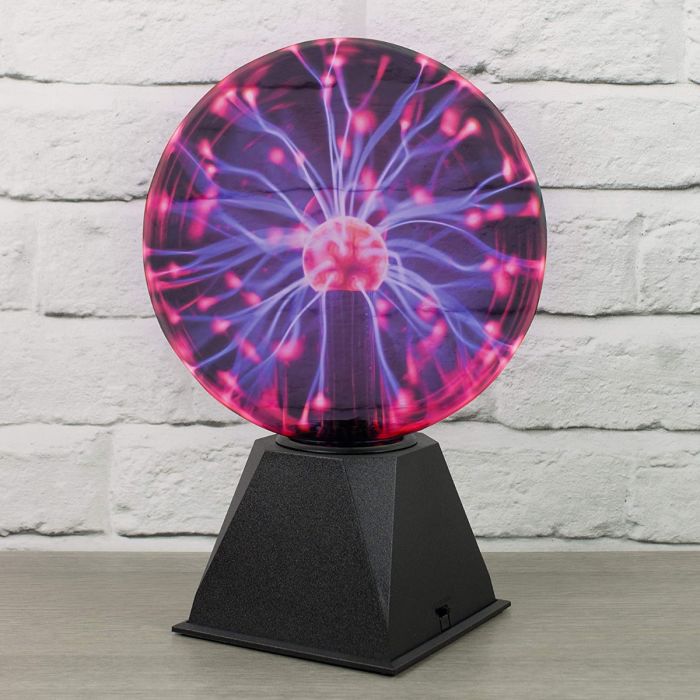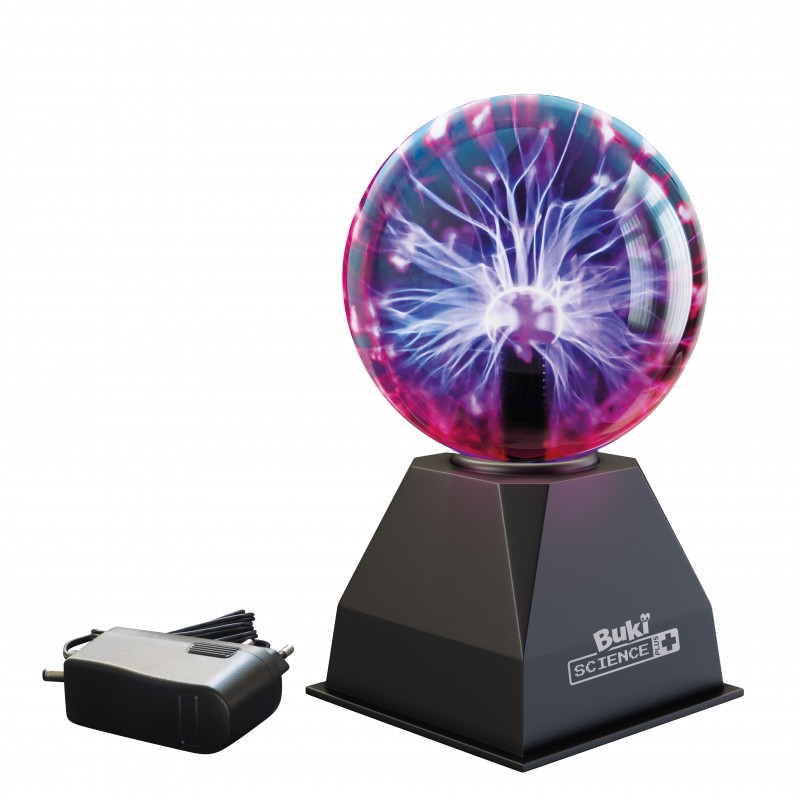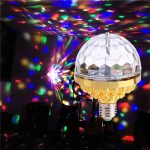Contents
Introduction to Plasma Ball Lamps
Plasma ball lamps are captivating devices that combine science and art, captivating viewers with their mesmerizing displays of light. These lamps create an alluring visual show, making them popular for home décor, educational purposes, and artistic installations. With their swirling tendrils of colored light, plasma balls draw attention and provoke curiosity, often resembling a miniature lightning storm contained within a glass sphere.
The science behind plasma ball lamps is rooted in physics, specifically the behavior of gases and electricity. They operate using electrical energy, which ionizes the gas inside the globe, resulting in spectacular light displays. Beyond their aesthetic appeal, plasma balls offer an amusing way to engage audiences in understanding scientific principles. This article explores the history, mechanics, practical uses, safety measures, and care for plasma ball lamps.
The History of Plasma Ball Lamps
Origins of Plasma Technology
The concept of plasma as a state of matter dates back to the early 20th century. Physicist Irving Langmuir coined the term “plasma” in the 1920s while conducting experiments on ionized gases. His work laid the groundwork for further exploration of this exciting state of matter. Researchers discovered that when an electric current passes through a gas at low pressure, the gas becomes ionized, allowing it to conduct electricity.
In the decades that followed, scientists experimented with various applications for plasma technology. The development of neon signs and fluorescent lights stemmed from this research, showcasing the potential of ionized gases. However, it was not until the 1980s that interest in decorative plasma devices surged. This renewed fascination with plasma culminated in the creation of the modern plasma ball lamp, captivating audiences worldwide.

The Rise of Plasma Ball Lamps
The popularity of plasma ball lamps grew quickly after their introduction. Initially marketed as educational tools, they became iconic pieces of home décor in the late 20th century. The iconic Science Museum in London and various science centers showcased these lamps, sparking interest among children and adults alike.
With growing accessibility to technology, manufacturers developed smaller, more affordable plasma ball lamps for consumers. This broader availability led to their integration into homes, offices, and public spaces as unique conversation pieces. The captivating displays of light and color made plasma balls a sought-after decorative item and an attractive addition to science-themed events.
How Plasma Ball Lamps Work
The Science Behind Plasma
At the core of each plasma ball lamp is a gas-filled globe that contains low-pressure inert gases like neon, argon, or xenon. When the lamp is powered on, an electrical current flows through a central electrode, ionizing the gas inside the globe. This ionization process strips electrons from gas atoms, creating positively charged ions and free electrons.
As the lamp operates, the electrical current excites the gas atoms, causing them to release energy in the form of light. The color of the released light depends on the type of gas used in the globe. For instance, neon produces a reddish-orange glow, while xenon emits a blue-violet light. The combination of these effects results in the mesmerizing tendrils of light seen in plasma ball lamps.
The Role of the Electrode
The central electrode plays a crucial role in the functioning of plasma ball lamps. It generates high-frequency alternating current (AC) electricity, creating an electric field that influences the ions in the gas. As the current flows through the gas, it produces minute electrical arcs that extend towards the glass walls of the sphere. These arcs form the distinctive tendrils of light, giving plasma balls their captivating appearance.
Interestingly, when a person touches the glass surface of the plasma globe, the electric field changes. The tendrils of light are attracted to the point of contact, creating an interactive experience that amazes onlookers. This phenomenon stirs curiosity about the nature of electricity and how it interacts with plasma, making plasma ball lamps ideal for educational demonstrations.

Practical Uses for Plasma Ball Lamps
Educational Tools
Plasma ball lamps are popular in educational settings due to their ability to illustrate complex scientific concepts. They provide a visual representation of plasma and electricity, making them effective teaching tools for students of all ages. Physics teachers often use plasma balls to demonstrate principles like electrical conductivity, ionization, and gas behavior in a visually engaging way.
By incorporating plasma lamps into science curriculums, educators can spark curiosity and interest in science. Students have the opportunity to witness firsthand how electrical energy can change the properties of gases, encouraging them to explore further. This hands-on approach enhances understanding and makes learning enjoyable.
Decorative Art Pieces
Beyond their educational applications, plasma ball lamps function as stunning decorative elements in homes and public spaces. Their eye-catching design can complement a variety of interior styles, from modern to eclectic. Whether placed on a desk, bookshelf, or side table, they can elevate the ambiance of any room.
Additionally, plasma lamps are often used in parties and special events. The colorful displays create an inviting atmosphere, engaging guests while providing entertainment. Given their versatility, plasma ball lamps can serve as unique conversation starters, captivating audiences in both intimate and crowded settings.

Safety Considerations for Plasma Ball Lamps
Electrical Safety
While plasma ball lamps are generally safe for use, caution is necessary when handling electrical devices. Users should ensure that the lamp is plugged into a properly grounded outlet to avoid any electrical hazards. Overloading electrical outlets can pose risks, so it is best to avoid using multiple high-wattage devices on the same circuit.
It is important to keep the lamp out of reach of small children and pets. Although the exterior glass is designed to withstand heat, touching the glass after extended use may lead to burns. Monitoring its operation and understanding its limitations will ensure a safe and enjoyable experience with plasma ball lamps.
Avoiding Damage to the Globe
The glass globe of a plasma ball lamp is delicate and should be handled with care. Avoid placing the lamp in areas where it may be knocked over or subjected to high-impact forces. Storing it in a safe location when not in use will help prevent accidental damage.
Cleaning the globe is also essential for maintaining proper functionality. Users should turn it off and allow it to cool before cleaning the surface. A microfiber cloth can gently remove dust and smudges without scratching the glass. By caring for the lamp properly, users can prolong its lifespan and keep it looking attractive.
Caring for Your Plasma Ball Lamp
Regular Cleaning and Maintenance
To ensure optimal functioning, regular cleaning and maintenance of plasma ball lamps are essential. As mentioned earlier, using a microfiber cloth for dusting will keep the globe free of dirt and grime. Avoid using harsh cleaners or abrasive materials, as these can damage the glass surface.
It is also vital to check the power cord periodically for signs of wear or damage. A frayed or damaged cord poses safety risks and should be replaced immediately. By conducting these checks regularly, users can ensure their plasma ball lamp remains functional and safe for continued enjoyment.
Proper Storage Techniques
When not in use, storing the plasma ball lamp in a dry and safe environment is crucial. Avoid placing it in humid areas, as moisture can interfere with its electrical components. Additionally, shielding the lamp from direct sunlight will help prevent fading or discoloration.
If the lamp is part of a collection or used for displays, consider using a display case or shelf to showcase it while protecting it from dust and potential damage. Proper storage techniques will not only maintain the aesthetic and usability of the lamp but also enhance its longevity.
Conclusion: The Allure of Plasma Ball Lamps
In conclusion, plasma ball lamps represent a magnificent blend of science and art. Their captivating displays of light and color engage viewers, making them popular for decorative and educational purposes. Understanding the science behind plasma, along with the history of its developments, enhances the appreciation of these intriguing devices.
With proper care and attention, plasma ball lamps can serve as enduring sources of fascination and inspiration. They offer a unique opportunity to explore scientific principles while adding an artistic touch to any space. As trends shift to incorporate such visually stimulating elements into modern design, the allure of plasma ball lamps will likely continue to grow, captivating new generations of admirers.
Whether as innovative teaching aids, engaging décor, or exciting conversation pieces, plasma ball lamps provide endless possibilities for exploration and enjoyment. They invite curiosity and spark discussions, making them timeless treasures that seamlessly blend functionality with beauty.


